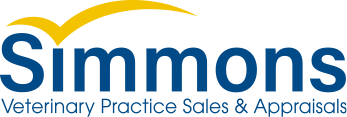Selling a practice in today’s climate is not what it was just five years ago. Not only is there a lot of noise in the profession regarding how to determine value, but there are also many companies and individuals advising on sale strategies.
Among many factors, we see three primary shifts affecting the veterinary practice sale market.
- Many associate veterinarians today hesitate to own a practice due to misconceptions they’ve been fed during school and as new graduates.
- The private equity “invasion” that began less than a decade ago.
- Gender and generational perceptions toward ownership.
With the rise of corporate investors, there are now two markets and values to consider, the Fair Market Value (FMV) and Corporate Investment Value (CIV). In this environment, salability is fragile for some practices – those grossing under $700K, those located in rural environments or the “wrong” side of town, and large animal or mixed animal practices. Nonetheless, with proper planning and representation, there is a shining light for owners seeking exit.
Mergers
With some creativity and the right circumstances, merging can be the most productive, practical and convenient exit strategy for some. Consider the economic synergies coincidental with a merger. Expenses such as rent, utilities, maintenance, some lay staff, some supplies, and some equipment will be absorbed in the non-relocating practice. This allows revenues to be combined while minimizing expenses, thus a more profitable 2-DVM practice versus two unprofitable solo doctor practices. Two practices competing for market share in a rural environment could also benefit from a merger.
- A “merger” is either by partnership, or where one owner buys the practice of another and combines them.
- Typically both are solo doctor practices with practically zero to marginal salability as-is.
- The less attractive facility and location should be relocated to the more attractive one.
- One of the two practices must vacate their facility either with termination of a lease or leaving an empty building for landlord to sell.
There are some qualifiers for this to become a successful venture.
- The two owners must be compatible.
- The practices should be within close proximity to each other.
- The practices should have similar cultures, management styles, and fees for a seamless client transition.
- Both owner doctors should remain for a transitional period, especially the relocating one, to minimize client attrition from the closed practice.
- If a partnership is formed, a strong Operating Agreement should be in place to minimize partner conflicts.
Partnership Buy-In
This arrangement makes particular sense when a practice has marginal salability such as mixed animal or rural location. Offering associate veterinarians a percentage buy-in gives the senior partner security in an exit plan and the associate a relatively seamless path to ownership.
- The buy-in rate is often established with a practice valuation.
- Typically the buy-in is financed by the senior owner/seller since banks are hesitant to finance without taking first lien position on the entire practice, which is often not an option to the senior owner.
- Buyer’s acquisition debt is serviced from profits received through the new ownership.
- A strong Operating Agreement should be in place to minimize partner conflicts.
Three good reasons to bring in a partner:
- Minimize doctor turnover
- Share management responsibilities
- Relatively secure exit strategy
Private Fair Market Sale
There are still veterinarians looking to purchase an existing practice, and financing is still readily available. Practices that sell on the open “fair” market generally gross between $800K and $1.5M and have 1-2 FTE DVMs. To list a practice on the open market, it should be appraised by a business appraiser specializing in veterinary practice appraisals and sales. If the price is too high, the cash flow may not support the price and the buyer’s lender will not lend. Alternatively, if the price is too low, the seller could be leaving money on the table. The appraisal process should differentiate between the Adjusted Net Cash Flow and the Profit and is typically an income approach with profits capitalized to determine its value. Fair market capitalization rates tend to be 4-6 times adjusted profit.
- Earnings drive value, and Cash Flow drives price.
- Cash Flow must be sufficient to fund the buyer’s debt-service and satisfy the buyer’s personal income needs.
- Buyer funds for the purchase price come primarily from commercial financing sources. Sellers are sometimes cashed out on the sale depending on price-to-gross ratio, though it is not uncommon for a small seller note in lieu of buyer down payment.
- If owned by selling DVM, the real estate is typically sold with the practice.
- Typically, this is a turn-key transaction with little to no transition from the selling DVM.
Corporate Sale
The corporate sale market is very different from selling to a private veterinarian. The ideal practice for a corporate investor is grossing over $1.5M, has a minimum of 3 FTE DVMs, and is in a desirable suburban area. While the determination of earnings is similar to that in the FMV appraisal process, the transaction methodology, price and terms vary greatly. In the current market, depending upon many factors, corporations typically pay in excess of 8 times adjusted profit and as high as 13 or 14 times.
- Corporations focus on profit and return on investment.
- Capital typically comes from private equity investment or a family fund.
- Corporate investors typically do not purchase real estate, though there are other buyers who will.
- The Buyer will expect all doctors to sign an employment agreement at closing and the selling [producing] doctor to stay on for a minimum of 2 years, most want 3 or more.
- Although terms vary, one can expect for some portion of the sale proceeds to be paid at a later date in the form of an earnout, holdback, or retention bonus.
- It is also common for a portion of purchase price to be paid in stocks in the parent company or retained ownership in the practice being sold.
While there are likely more creative options that have not been considered here, these are the primary avenues to exit from practice ownership in today’s evolved market. Dr. Watson and Carly delve deeper into each of these options in the Simmons’ webinar series, An Hour with the Experts. Visit https://simmonsinc.com/webinars-archive/ to download the recorded webinar.



